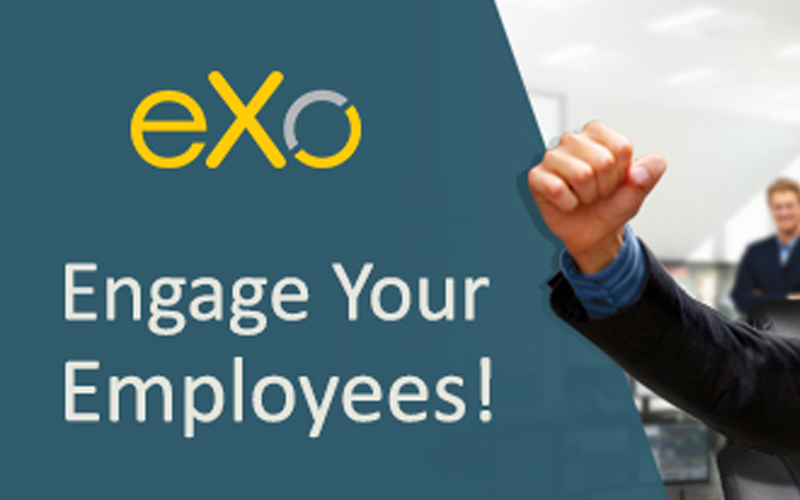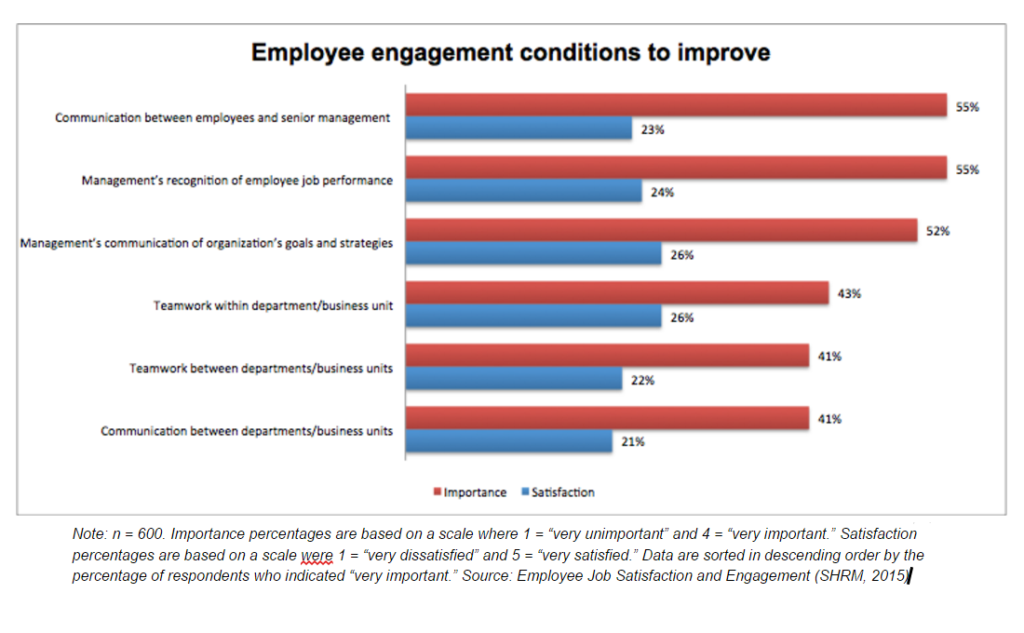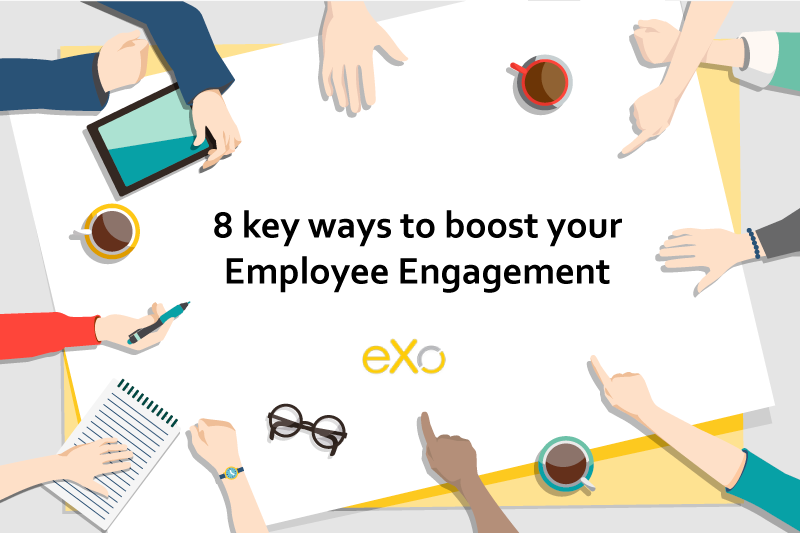- Veronika Mazour
- February 9, 2016
Solutions to Your Employee Disengagement!
If you’re facing employee engagement challenges in your organization, you are not alone. According to a Gallup survey, in 2015, 68% of US employees were disengaged from their companies.
That number is even higher worldwide.

Content
1. Why should you care about employee engagement?
If it is an obvious fact that engaged employees perform better at their jobs, the scale of their impact on the company’s overall performance comes as a surprise. Organizations with high employee engagement are 12% more profitable than average and offer 22% higher-than-average shareholder returns. In contrast, each disengaged employee costs her or his employer more than $2,000 per year: that’s half a million dollars annually for a medium-sized company.
Naturally, employee engagement consistently appears in the top three challenges faced by HR organizations today. In 2005, 39% of HR professionals perceived employee engagement as the most important HR challenge in their organization.
2. What influences employee engagement?
Employee engagement is mostly influenced by conditions in the workplace, be they the work environment or the relationship with management.
The 2015 employee job satisfaction and engagement survey by SHRM offers interesting insights as to the areas of possible employee engagement focus and improvement.
The following management-related criteria, ranked as very important by more than 50% of those surveyed, also showed the lowest satisfaction levels:
- Communication between employees and senior management was perceived to be very important by 55% of those surveyed, ranking 8th in the overall job satisfaction list of conditions. But only 23% of those surveyed were fully satisfied with the level of communication at their jobs.
- In the same way, management’s recognition of employee job performance (also ranked 8th in importance) fully satisfied only 24% of those surveyed.
- Management’s communication of the organization’s goals and strategies was very important for 52% and fully satisfied 26%.
A similar analysis of work environment criteria showed the following:
- Teamwork within a department/business unit was ranked very important by 43% of the employees surveyed, while only 26% were fully satisfied with this criterion at their jobs.
- Teamwork between departments/business units showed similar results (41% vs. 22%).
- Communication between departments/business units was very important for 41% but fully satisfied only 21%.

It is also interesting to note that the importance of the above criteria in overall employee job satisfaction has been steadily increasing for the past 10 years, while more traditional things such as compensation levels or job security remain stable or decreased.
For example, management’s recognition of employee job performance was very important for 47% of employees in 2004, compared to 55% now. The importance of relationships with coworkers increased from 33% to 44% during the same time.
3. How can an employee-centered collaborative intranet improve employee engagement?
If you employ knowledge workers, chances are they spend most of their work day in front of their computer. By providing them with a digital work experience where they are connected to peers, relevant information, and tools, you not only obtain a means to reach and engage employees top-down, you naturally integrate them into the corporate culture.
Improve teamwork and communication within departments and between business units
Collaborative intranets connect employees to each other and empower collaboration on cross-functional projects. They also facilitate communication flow between departments. As a result, employees interact more and better with coworkers within their department and from other locations/departments, nurturing their sense of belonging and engagement.
Facilitate management’s recognition of employees
Social intranets allow managers to publicly recognize their employees’ achievements, creating a positive corporate culture.
Connect to peers
Employees create connections with a wider range of coworkers thanks to social intranet interactions. As a result, they feel a greater sense of belonging to the company as a whole.
Improve top-down communications reach
A collaborative intranet is primarily a workplace where employees get things done, not a communication channel. For that very reason, top-down messages and communications using collaborative intranet channels have a better reach than email or traditional intranets, which are largely ignored by employees. Not only can employees be reached at their digital workplace, they can also be targeted with specific messages that are relevant to their department, location, or job function.
Promote dialogue
Social intranets allow employees to engage with top-down communication. They can like and comment on messages they receive, which improves communication between employees and senior management.
Connect to information
Employee-centered intranets connect employees to relevant information, improving their company knowledge.
Overall, improving employee engagement is not about an efficient way to communicate top-down. A modern corporate intranet should empower an employee within the organization, engaging him or her via multi-touch contacts with peers, management, and company information.
Join the eXo tribe by registering for the community and get updates, tutorials, support, and access to the Platform and downloads section to try it for yourself!
Let us know if the post has been helpful to you by leaving a comment or contacting us!

FREE WHITE PAPER
The Complete
Guide to
Employee Engagement
Guide to
Employee Engagement
There are many definitions for the concept of employee engagement out there.
- Tags: Employee engagement, workplace
Rate this post
I am the Chief Executive Officer of eXo Platform (the open source digital workplace platform), a company that I co-founded while in college and that I came back to after several years in the banking and consulting industry. I blog about modern work, about open-source and sovereignty issues. Occasionally, I also blog about my personal areas of interest, such as personal development, work–life balance, sustainability and gender equality.
Related posts
- All
- eXo
- Digital workplace
- Employee engagement
- Open source
- Future of work
- Internal communication
- Collaboration
- News
- intranet
- workplace
- Knowledge management
- Employee experience
- Employee productivity
- onboarding
- Employee recognition
- Change management
- Cartoon
- Digital transformation
- Infographic
- Remote work
- Industry trends
- Product News
- Thought leadership
- Tips & Tricks
- Tutorial
- Uncategorized
Leave a Reply
( Your e-mail address will not be published)
Connexion
0 Comments
Commentaires en ligne
Afficher tous les commentaires


